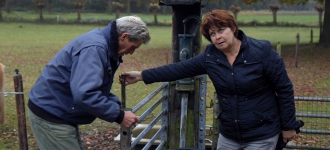It may be cliché to say that our most valuable treasure is our mental and physical well-being, without which we cannot live life to the fullest. Yet, at some point in our lives, our mental (and/or physical) health may become compromised, knocking our well-being out of balance. This harmony is a rare privilege to have, yet strong social pressure suppresses the voices that would state otherwise. Luckily, it’s becoming more common to talk about our problems and dispel the myth that pretending they don’t exist will make them go away. The films in this section present us with some of the issues that the majority of society typically keep between four walls, despite the fact that by sharing our various solutions to our challenges, we can help each other and simultaneously improve the mental health of our society.
The storylines of these six films are driven by faith in the protagonists’ determination, which seems to be strengthened rather than weakened by their challenges and traumas. Our relationship with our family and friends, art, creativity, and the joy of creation, can all be factors that support us in taking up the massive task of living a happy life.
Eva, the charismatic female protagonist of the Spanish documentary The First Woman, gives her all to escape the physical confines of the psychiatric institution and return to the ordinariness of the outside world, dominated by “normal people”, where she can live a “normal life”. For Eva, this means the freedom to engage in personal relationships: taking care of her mother, finding a partner, reuniting with her son whom she has not seen for a very long time. In the Norwegian film Young and Afraid, the young directors bravely show their and their peers’ mental struggles, sending a distress signal to the world expressing that they are not OK, that there is something wrong, and that they need help. They find support in each other and in the camera’s ability to stand witness, to transcend every border and provide a feeling of safety.
Night Shot is a Chilean art student’s creative visual testimony to the long, painful aftermath of the night she was raped at a beach party. Such an attack does not just disappear without a trace - it leaves behind anxiety and panic. The bureaucratic procedure of reporting the crime and subsequent judicial proceedings only deepen the wound. Here, with an overwhelming collage of kaleidoscopic images, we see a young artist’s methods of processing trauma.
In the film He’s My Brother, Christine (the film’s co-director) and her family overcome the daily challenges of her brother’s severe mental and physical disabilities with tremendous love and devotion, inventing a new language to communicate among themselves, and constantly fighting for help from the state, which seems to exclude the very people struggling with the greatest disadvantages from the social security system. Similar difficulties are portrayed in the Dutch film Lost in Memories, by Ruud Lenssen. The film, about Lenssen’s own father, is an attempt to record the memories he has not yet forgotten, along with his loveable personality, which dementia is slowly taking away. The Reason I Jump, based on Naoki Higashida’s book of the same title, gives insight for non-autistic viewers into the ways people on the spectrum see and think about things.
Through lenses of empathy and the unique filters of the filmmakers, this section gives us an opportunity to dive into six different worlds, all of which are part of our reality.
Program curator: Enikő Gyureskó

















